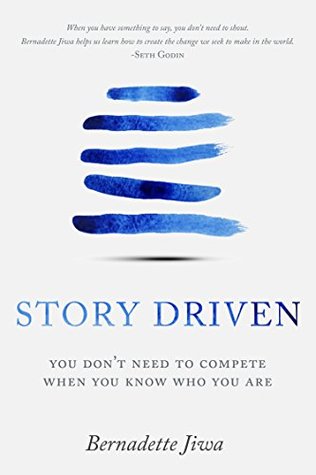More on this book
Community
Kindle Notes & Highlights
They have a powerful sense of identity. They don’t worry about differentiating themselves from the competition or obsess about telling the right story. They tell the real story instead.
What do you stand for? Where are you headed and why? What’s been the making of you? What will make your career or company great?
We have become reactive to the competitive landscape, rather than responsive to the needs of our communities—those people we hope to serve. We are so focused on the competition, or even the threat of it, that we’ve forgotten to double down on what makes us and our work unique and valuable.
But if I asked you right now how you will know when you’ve achieved it, you’d probably struggle to give an immediate answer. Even when we think we know what we’re working towards, our actions from day to day don’t always support our answers.
For them, success is now—the alignment of thoughts, beliefs, intentions and actions. The journey is part of their success.
reflecting deeply about the reason our idea or project needs to exist and the change we’re trying to create. This first step is harder than it seems, because asking these deeper questions makes us feel vulnerable to failure.
we are more likely to make progress when we believe in the significance of what we’re doing.
it’s vital to imagine how what you’re working on creates change and to articulate your reasons for wanting to do it. Why you? Why this? Why now? Why for them? Why there? Why that way and not this? What’s your story and how will you stay true to it?
Even if on paper you are the most qualified, even if you can demonstrate that your product is superior, even if you have a watertight rationale to demonstrate that you are the best choice by a mile, people will be reluctant to support you unless they believe you. And they won’t believe you unless they can see you. People need to understand what you stand for, just as much as they need to know how your policies, products and services can help them.
You need to give them a reason to be loyal to your
brand, rather than a hundred reasons why you’re better th...
This highlight has been truncated due to consecutive passage length restrictions.
Loyalty is achieved only with resonance.
Your mission is your purpose—which is the term I prefer and have chosen to use for the sake of clarity.
it’s the reason your company exists. Your purpose is why you do what you do today and every day.
Your vision is your aspiration for the future—the contribution you or...
This highlight has been truncated due to consecutive passage length restrictions.
…if we are selling “a reduction in the cost of communication” or “zero effort knowledge management” or “making better decisions, faster” or “all your team communication, instantly searchable, available wherever you go” or “75% less email” or some other valuable result of adopting Slack, we will find many more buyers.
Value prop articulated not as a feature of the product but as a result of using the product from the customer’s perspective—that is, their world after your product. Value add to their lives.
Often, we start with an idea for a product or service, unsure of the contribution the product or business will make over time. We become so focused on succeeding in the present that we forget to take a longer-term term view of our potential to create an impact. By only planning to achieve near-term goals, we’re in danger of going down blind alleys in an attempt to be competitive or getting distracted and doing things that don’t serve us in the long run.
use our vision as a jumping-off point for our strategy and work backwards,
The vision informs the...
This highlight has been truncated due to consecutive passage length restrictions.
Think of your strategy as a path of stepping stones that you na...
This highlight has been truncated due to consecutive passage length restrictions.
Having a strategy enables you to ask better tac...
This highlight has been truncated due to consecutive passage length restrictions.
Since their product wasn’t unique, they constantly found themselves competing on price.
What if instead of trying to make a cheaper thermal sock, they tried to make the warmest thermal sock in the world?


